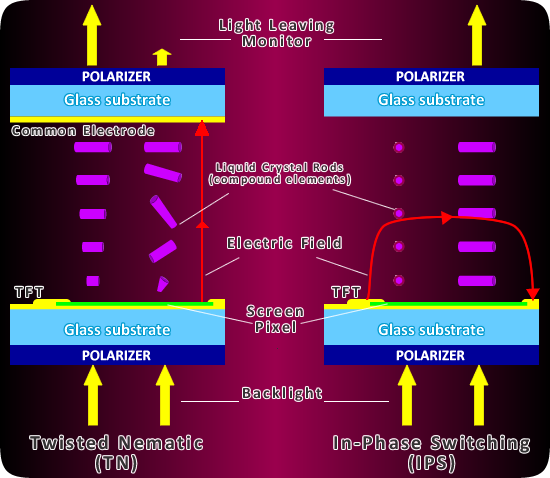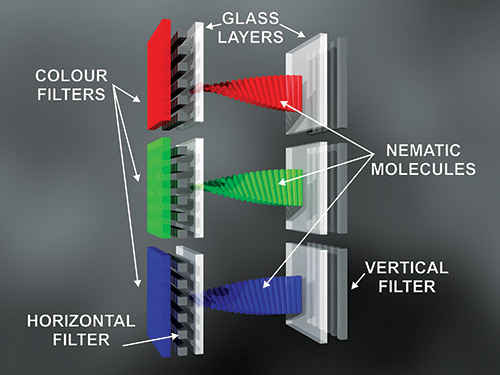Abstract:
Description of the three biggest type of technology panels. These are IPS, TN, VA. A breakdown of each one is given then they are compared in a number of factors.
Peer Review Comments for First Draft
“Your technical discription looks amazing. From the introduction, you explain the purpose of the document and state how reading this text will help the reader chose the type of monitors they need. I like how you have pictures to support your writing to make it more clear and how you explain the mechanism of monitors. The outline is clear and is composed appropriately, as you explain the various type of monitors and give in depth explanation. I also liked that you have a table to highlight the different monitor types. Some things that you can improve on is highlighting the titles because it can make it easier to identify when you start discussing a certain topic.”
Nur Mohammad Mazumder
Classmate“Hi Jensy, your work looks great! I love your inclusion of the pictures and the breakdown of the outline is very easy to understand. Your description was easy to follow and very interesting. Everything looks really good, maybe just bold some headers so that the outline is more visually easy to follow.”
Noel Mathew
ClassmateWhat is the best technology panel?
Introduction: what is the purpose of this paper?
As the technology has evolved, so have the number of technological panels. As a consumer sometimes is hard to decide which one is the most adequate for one’s need. There are many factors that come into play when choosing a monitor. In order to decide which, one fits one’s need they need to research how they work, what are their benefits, and what are their drawbacks.
What is an LCD panel?

An LCD panel is a flat display panel that usually serves as a computer monitor. LCD panels are often found in devices such as television, desktop computers, monitors, smartphones, and many others.
What is LCD technology?
The LCD panels uses the light modulated properties of the liquid crystals combined with polarizers. A backlight emits light that passes through the first piece (this backlight varies on the type of display that you are observing). Electrical currents then align the liquid crystal molecules to let varying levels of light to pass through to the second piece and create different colors and images that can be seen.
What are the types of LCD Panel Types in the market?
There are three main types of LCD panels in the market which are:
- IPS (In-Plane Switching)
- TN (Twisted Nematic)
- VA (Vertical Alignment
What is an IPS Monitor?

An IPS (In-Plane Switching) monitor works by having liquid crystals aligned in a parallel sequence to produce colors. IPS panels shift patterns of their liquid crystals horizontally to display an image. They have good color reproduction and have better viewing angles than any other LCD display. IPS was created to fix the shortcoming of the TN panels
What is a TN Monitor?

TN (Twisted Nematic) panels were the first type of LCD panels that ever existed. This type of panel has a row of backlight LEDs that light up the panel at the bottom of the screen which is then covered by the optical system; this is a group of sheets that distribute the light evenly throughout the whole panel. TN panels work by having light pass through sheets which with the help of electrical energy, twist to vary the amount of light that gets through each part in a sub-pixel. These sub-pixels are made up of 3 colors; red, green or blue (RGB) and are responsible for giving color to an image.
What is a VA Monitor?

VA (vertical alignment) panels uses vertically aligned liquid crystals which incline when current is applied to allow light to get through. The VA panels were created to offer a middle ground panel between the IPS and VA Panels. VA panels have the capability to block light from the backlight when it is not wanted this ability helps the panel have higher contrast ratios and deeper blacks.
Comparing the Panels (IPS vs. TN vs. VA)
There are many factors that one should consider when looking to buy a new monitor. Often, when buying new monitors people tend to ignore their options and go with the cheapest one because it fits their budget. But what really people should be looking at is the product’s individual features.
| Viewing Angles | Color Reproduction | Response Time | Price | |
| IPS | 178/178 degree Rate: Excellent | Excellent | 4ms ~ 6ms | $$$ |
| TN | 170/160 degree Rate: Poor | Poor | 1ms | $ |
| VA | Really Good | Really Good | 1ms ~ 4ms | $$ |
What are the benefits of these Monitor?
Twisted Nematic (TN) – This monitor is the most affordable when in comparison to the other two. On average, TN monitor has faster response time, its response time can reach up to 1ms, and it can reach high refresh rates up to 240 Hz.
In-Plane Switching (IPS) – The IPS monitor was designed to overcome the image quality short coming of the TN panels. This monitor has the best color accuracy, higher bit depth with about 8-bit or 10-bit panels. Lastly, this panel has the best viewing angles creating better visuals.
Vertical Alignment (VA) – The VA monitor contrast ratio excels with the range from 3000:1 to 6000:1. VA panels also have very good wide viewing angles.
What are the drawbacks of these Monitors?
Twisted Nematic (TN) – The TN Panels tend to have very low viewing angles rated as 170/160. The biggest issue with TN panels is the bad shifts when viewing the angle from the sides. This panel also suffers from poor color reproduction.
In-Plane Switching (IPS) – Although the prices for IPS are going down with the newest technology coming out the price for IPS panels tend to be more expensive. Another drawback is the slow refreshing rates of around 75Hz.
Vertical Alignment (VA) – VA Panels like the IPS has very low refreshing rates. The refreshing rates of this panel tend to be around 60Hz. Also, this panel suffers from color shifting.
Conclusion
Each of the panels above have its advantages and disadvantages. When choosing what is the best panel will depend on one’s need. For those who play a lot of competitive video games the TN panels would be the optimal choice. For people who want a monitor for general use might want to consider the VA monitor. Lastly, those who are artistic and who are interested in a more impressive and immerse experience may want an IPS monitor.
Citation
Hale, Brent, et al. “TN vs IPS vs VA: Which Is the Best Monitor Display?” Tech Guided, 23 Apr. 2019, techguided.com/display-panel-types-tn-ips-va/.
“IPS: Technology & Solution: Information Display: Business.” LG Global, www.lg.com/global/business/technology-solution-ips.
Kerns, Michael. “Display Panel Type Differences Defined – TN vs. IPS, PLS, VA, & More.” News, www.gamersnexus.net/guides/1890-panel-comparison-tn-ips-pls-va-crt.
“Liquid-Crystal Display.” Wikipedia, Wikimedia Foundation, 30 Sept. 2020, en.wikipedia.org/wiki/Liquid-crystal_display.


